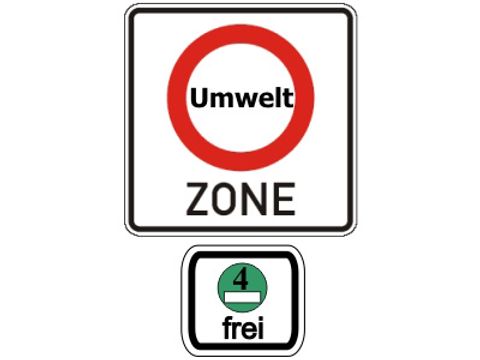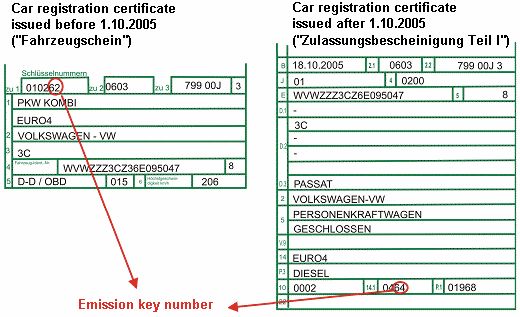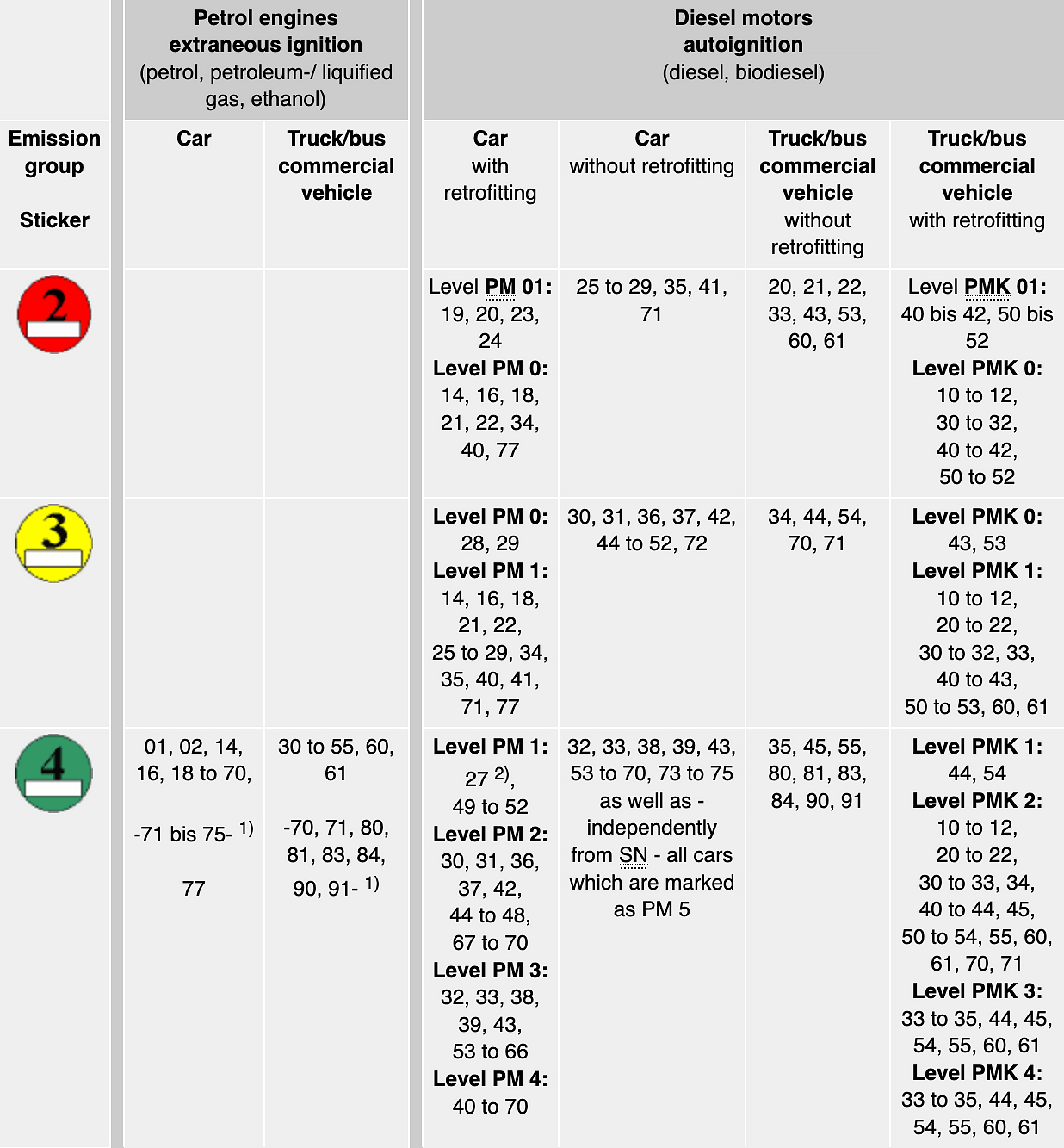In Berlin’s low emission zone, vehicles must be marked with a green sticker.
Vehicles registered abroad also require a green sticker. The sticker must be attached to the windscreen and facilitates the control of the low emission zone.
The stickers are valid in all low emission zones in Germany.
If your vehicle is registered in Germany you can find out in the table below or via the Internet database www.feinstaubplakette.de whether your vehicle is entitled to receive a green sticker, possibly by particulate filter retrofit.
Electric and plug-in hybrid vehicles with a German E-registration plate are exempted from the sticker requirement in Berlin according to a general Berlin decree. Electric vehicles registered abroad can be marked with a blue E-sticker according to Appendix 3a FZV (Vehicle Registration Ordinance) and thus drive in the low emission zone.
Driving or parking in the low emission zone without a green sticker or an exemption permit is an offence, fined with 80 Euros.
The legal basis for the marking requirement is the 35th ordinance for the implementation of the Federal Immission Control Act – Marking Ordinance (35. BImSchV), adopted in 2007.
The system has not been updated since 2007, so that even the latest vehicles with the Euro 6 emission standard receive only a green sticker of the pollutant group 4.
Please find more information on the Marking Ordinance below.
- Where can I obtain a sticker?
- Does the validity of the sticker expire at any time?
- How much does the sticker cost?
- What does the Marking Ordinance regulate?
- How are emission groups defined?
- Which emission group does my vehicle belong to?
- Where can I find my key number in the German vehicle documents?
- Assignment of key numbers to the emission groups
- How are foreign vehicles assigned to the emission groups?




